Author Archives: Eleanor J. Bader
June 2, 2017 by Eleanor J. Bader
How This Jewish Glass Artist Juggles Work and Family
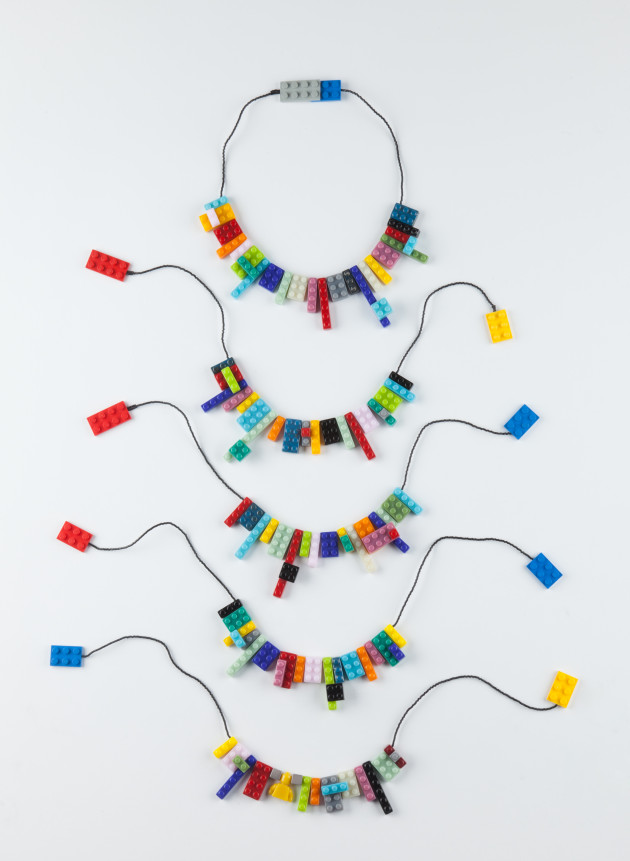
The first thing I notice about artist Dena Pengas is her asymmetrical, bold, and multi-colored jewelry. At first glance, it appears as if her necklace is made of Lego pieces, but as I get closer I realize that each rectangle is, in fact, glass. The overall effect is elegant, whimsical, and wonderfully cheerful. Later, when we talk, she tells me that she hopes that this piece—one of many that she has created—will “spark nostalgia is the wearer and viewer.”
The 38-year-old Brooklyn-based Pengas recently spoke to me about her work. As the conversation moved from topic to topic, we touched upon parenthood, marriage, work-family balance, and what it means to be socially responsible in a time of backlash and retrenchment.
- No Comments
May 25, 2017 by Eleanor J. Bader
A Philanthropy Office That’s a Performance Space, Too
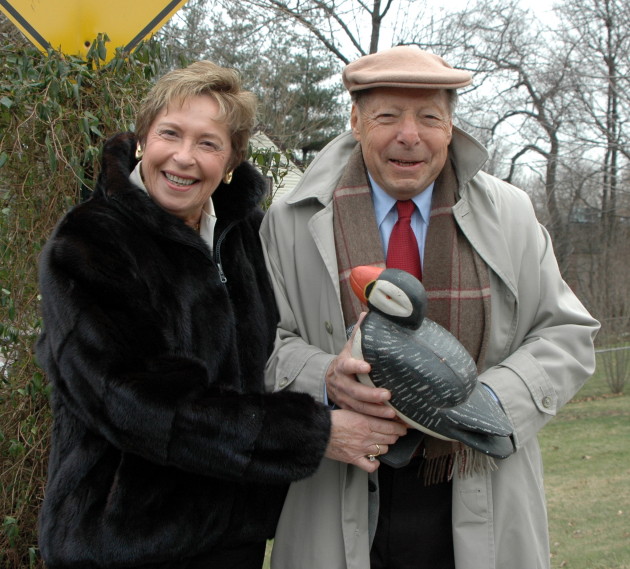
Puffin Foundation, Ltd. Executive Director Gladys Miller-Rosenstein and President Perry Rosenstein during renaming of E. Oakdene Ave. to Puffin Way by the Town Council of Teaneck.
Once upon a time, the orange-beaked puffin—native to the waters of the Northern United States—was on the verge of extinction. But after concerted efforts by a slew of determined people, the puffin population is again flourishing.
The founders of the Teaneck, New Jersey-based Puffin Foundation see the bird’s resurgence as a metaphor and they have made it their mission to support movements that might otherwise falter. As their website explains, the Foundation strives to “open doors of artistic expression by providing grants to artists and arts organizations that are often excluded from mainstream opportunities due to their race, gender or social philosophy.”
In practical terms, the 37-year-old philanthropy has supported a wide array of visual artists, writers, filmmakers, poets, musicians, journalists, and photographers. Among them are names that are likely familiar to Lilith readers, including Agnes Adler, Alice Matzkin, and Lilly Rivlin. Groups—and media—have also benefitted from the fund’s largesse: The Nation, In These Times, Jewish Currents, Mother Jones, Salon, and Jews for Racial and Economic Justice have received grants.
The Puffin Foundation’s Executive Director, Gladys Miller-Rosenstein, met with Lilith reporter Eleanor J. Bader in mid-May in the group’s spacious award-and-art-filled office.
- No Comments
April 3, 2017 by Eleanor J. Bader
Making Murals in the Public Interest
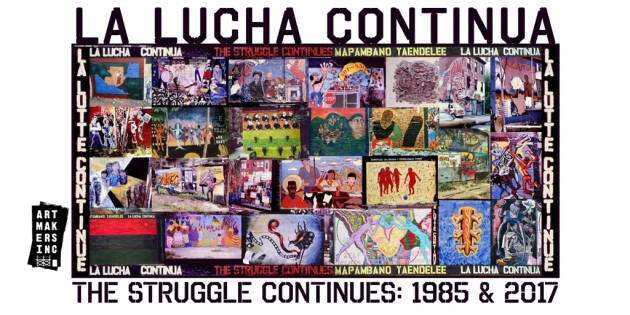 Thirty-two years ago, 34 artists came together and painted a series of 24 murals on the walls of four buildings surrounding La Plaza Cultural Community Garden in Manhattan’s East Village. By that point the lot was filled with rubble, having been neglected for many years. But Artmakers Inc., an organization formed in 1983 to create public art that addresses community concerns, saw this as a challenge rather than as an impediment.
Thirty-two years ago, 34 artists came together and painted a series of 24 murals on the walls of four buildings surrounding La Plaza Cultural Community Garden in Manhattan’s East Village. By that point the lot was filled with rubble, having been neglected for many years. But Artmakers Inc., an organization formed in 1983 to create public art that addresses community concerns, saw this as a challenge rather than as an impediment.
In fact, participants in the mural project recognized that the garden, on the corner of East 9th Street and Avenue C, was in a rapidly changing neighborhood and they were determined that the paintings would address some of the most burning issues of the 1980s: feminism, gentrification, immigration, and police brutality. They also wanted to convey their opposition to South African apartheid and U.S. intervention in Central America.
These were not unusual subjects for the Artmakers. Indeed, virtually every Artmaker installation tackles political issues, with titles such as “We Shall Overcome,” “When Women Pursue Justice,” and “We’re Still Waiting.”
Artmakers was founded by Eva Cockcroft (1937-1999), a Vienna-born activist artist whose family came to the U.S. after Hitler came to power. Since its founding 34 years ago, the group has created more than 50 murals, most of them in the five boroughs of New York City. Sadly, many no longer exist—some buildings have been torn down, walls have been whitewashed, and weather has taken its toll.
- No Comments
March 3, 2017 by Eleanor J. Bader
Meet the Publication Taking on Anti-Choice Propaganda
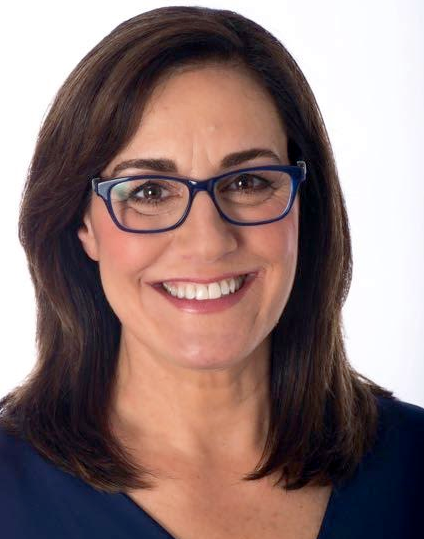
Jodi Jacobson is Rewire’s Editor in Chief. Photo © Greg Schaler.
The site is called Rewire and its goal is to “rewire the way we think about the news, especially when it comes to reproductive and sexual health, rights, and justice.” It’s obviously a huge mission.
Five days a week, 51 weeks a year (staff take a break in late December) the site publishes original news stories, analyses, cultural critiques, plus podcasts and interviews. On a recent Tuesday, for example, Rewire covered racial disparities in abortion access; the mistreatment of immigrants and refugees who have experienced domestic abuse; Title IX protections for transgender teens; a renewed Republican-led crusade against pornography; the links between the Trump administration and the private prison industry; and a review of Joyce Carol Oates’ latest novel, A Book of American Martyrs.
This is intersectional feminism writ large.
- No Comments
January 31, 2017 by Eleanor J. Bader
“Not too long ago, some of the people who broke U.S. law to come into the country were Jews.”
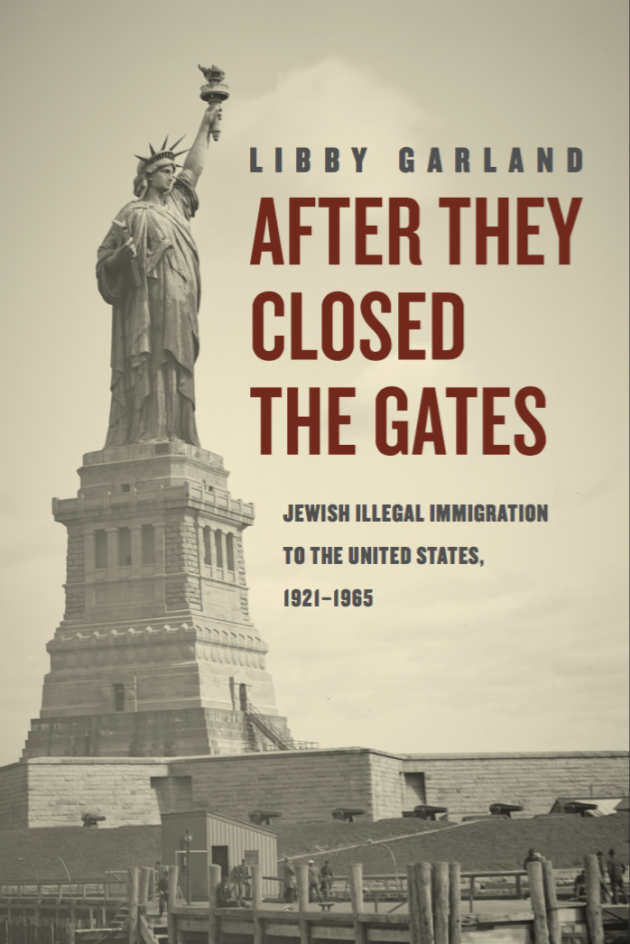 As Donald Trump moves forward with plans to build a racist barrier between the U.S. and Mexico, signs Executive Orders barring most refugees from entering the country, and temporarily halts the issuance of visas for people from Iraq, Iran, Libya, Somalia, Sudan and Yemen, many of us are angry and ashamed.
As Donald Trump moves forward with plans to build a racist barrier between the U.S. and Mexico, signs Executive Orders barring most refugees from entering the country, and temporarily halts the issuance of visas for people from Iraq, Iran, Libya, Somalia, Sudan and Yemen, many of us are angry and ashamed.
Historian Libby Garland, a professor at Kingsborough Community College in Brooklyn, NY, shares these sentiments. At the same time, as a longtime researcher specializing in immigration policy, she is able to put today’s conservative momentum into a broader political context.
Her first book, After They Closed the Gates: Jewish Illegal Immigration to the United States, 1921-1965 [University of Chicago Press, 2014] looks at the impetus behind two exclusionary quota laws passed by Congress in 1921 and 1924 that were meant to limit the number of newcomers entering the United States. “The quota laws grew out of a widespread belief that some kinds of foreigners could be kept out of the nation, and out of a certainty that these groups could be recognized, counted and stopped from entering,” she writes.
- No Comments
January 10, 2017 by Eleanor J. Bader
The Transformative Work of JFREJ’s Jews of Color Caucus
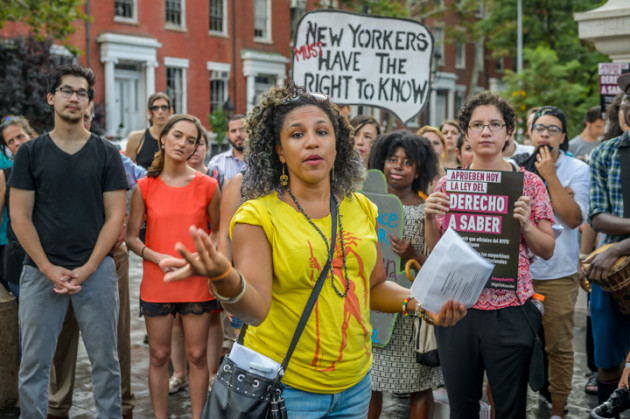
Photo credit: Erik McGregor.
“I identify as a Black, multi-race, Jewish woman of color,” 31-year-old social worker-teacher-activist Shoshana Brown says by way of introduction. Now active in the Jews of Color Caucus of Jews for Racial and Economic Justice [JFREJ], Bronx-born Brown has many questions about how best to oppose racism and white supremacy. Indeed, Brown’s queries address strategic and tactical concerns that are important for all progressive social justice efforts—religious and secular, Jewish and non—as we enter the uncharted terrain of Trumplandia.
Brown spoke to Lilith reporter Eleanor J. Bader about the Caucus’ ongoing work in late December.
- No Comments
December 6, 2016 by Eleanor J. Bader
Holocaust Survivor Helena Weinrauch on Trauma and the Joy of Dancing
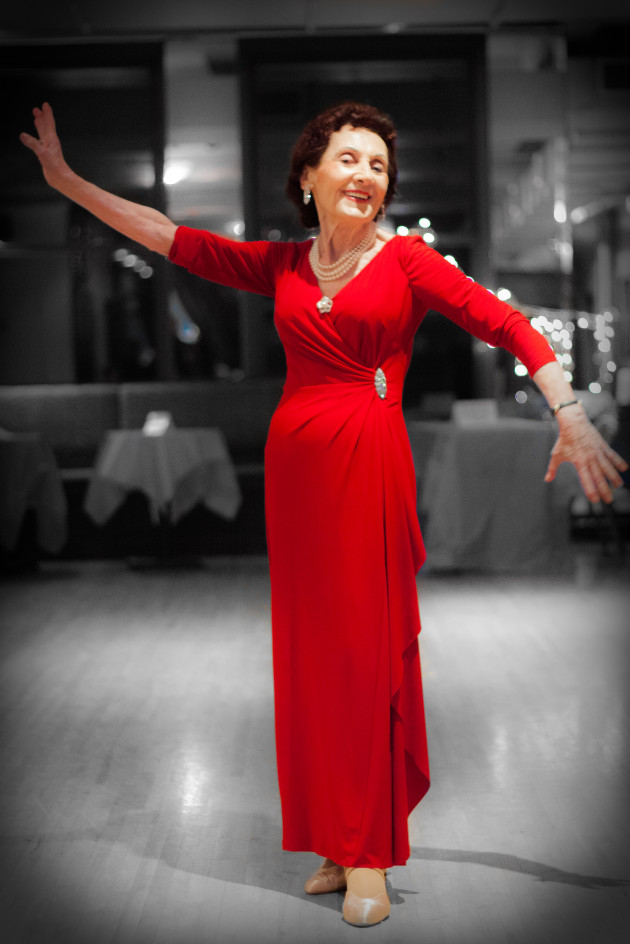
Helena Weinrauch. Photo courtesy of Karen Goldfarb.
When Helena Weinrauch was 88 years old, she found a promotional flyer from the Fred Astaire Dance Studio in her mailbox. The leaflet promised a free lesson followed by a party.
Four years later, Weinrauch has become a Dancing Angel, a title given to her by the Manhattan Ballroom Society, and currently spends five hours a week doing the Fox Trot, Merengue, Samba and Tango.
“When I dance I forget everything that bothers me,” she told Lilith reporter Eleanor J. Bader. “My fear disappears. There was never time in my life for dancing before this. There were always more important things to do, but before I say goodbye to this world I want to do something I always dreamed of doing. I think I’ve earned it.”
- 2 Comments
November 23, 2016 by Eleanor J. Bader
NPR’s Leah Donnella on Being a Biracial Jew

NPR’s Leah Donnella wrote a short personal essay entitled “Black, Jewish And Avoiding the Synagogue On Yom Kippur.” Photo Credit: Caitlin Sanders
Shortly before the world’s Jews welcomed year 5777 earlier this fall, National Public Radio’s Leah Donnella published a short personal essay entitled, “Black, Jewish And Avoiding The Synagogue On Yom Kippur.” In it, she described several unsettling incidents that left her feeling unmoored, a biracial Jew without a place in established Judaism. As the 25-year-old daughter of a white Jewish mother and an African-American Catholic father, Donnella says that she hopes the article will prompt American Jews to take stock of their assumptions and treat Jews of color not as strange, out-of-place, curiosities but as members of an increasingly diverse and vibrant spiritual community.
And although Donnella makes clear that she speaks for no one but herself, the fact that there are approximately 200,000 Asian, Black and Latino/a Jews living in the US further shows that her voice needs to be heeded and taken seriously.
Donnella spoke to Eleanor J. Bader by telephone two days after the Presidential election. Both interviewee and interviewer did their best not to dwell on the upsetting outcome.
- 1 Comment
October 21, 2016 by Eleanor J. Bader
What Inspired This Non-Jew to Write Amsterdam Holocaust Fiction?

Mary Fillmore, the author of “An Address in Amsterdam”
When writer Mary Dingee Fillmore arrived in Amsterdam for a six month stay in 2001, a photograph she happened upon in the city’s Jewish Historical Museum startled her. The picture showed a favorite landmark (De Waag) near the apartment where she and her partner, astronomer Joanna Rankin, were staying, cordoned off by barbed wire.
“I realized that we were living in the Jewish Quarter,” she explains. “My neighbors had been rounded up just a little over 60 years before. Suddenly, the question of what I would have done during the war became very real to me. Would I have helped them and resisted, or joined the colluders and collaborators?”
- 1 Comment
October 7, 2016 by Eleanor J. Bader
Homeless and Hungry: How One Nashville Doctor Reaches Out
The National Low Income Housing Coalition estimates that a Tennessee resident earning minimum wage—$7.25 an hour—would have to work 67 hours a week in order to afford a modest one-bedroom apartment in The Volunteer State.
It’s even worse in the capital city of Nashville. There, the NLIHC notes, today’s average market rents require earnings of $12.14 an hour for a one-bedroom flat, or $17.99 an hour for a two-bedroom.
- No Comments
 Please wait...
Please wait...